Long-runout characteristics of the Yongguang 1# loess flowslide in Minxian County, Gansu Province
-
摘要: 流滑型黄土滑坡是黄土地区沿沟道或斜坡远程滑动和堆积的长条状特殊类型滑坡,常造成难以预料的严重灾害。2013年7月22日7时45分,甘肃岷县漳县Ms6.6级地震诱发的岷县永光1#滑坡体积约23×104 m3,造成12人遇难。滑坡前后缘高差175 m,总长度1030 m,高长比值为0.17,属远程滑坡。通过现场调查和对滑动过程观察资料的综合分析,探讨了其滑动过程特征、不同部位的滑速及变化情况,分析了滑动机理。受地震作用促发和地形条件等影响,永光1#滑坡经历了2次加速—减速的复杂滑动过程,滑坡首先在前部平台区整体滑动50~130 m,前缘约6×104 m3滑体再沿前部沟道滑动740 m,最大滑距达870 m,滑动总历时约7 h,最大滑速约10.6 m/s,平均滑速0.034 m/s。永光1#滑坡由地震和前期降水耦合作用形成,地震前大量降水的入渗和软化,滑动过程中高含水率滑带土产生高孔隙水压力,甚至导致液化发生,圈闭的沟道地形和滑带土的低渗透性,使孔隙水压力消散非常缓慢,在全滑程中滑带土摩阻力大幅降低,持速效应明显,是永光1#滑坡远程滑动的主要原因。Abstract: Flowslide in loessic regions, characterized by their elongated shape and tendency to slide and accumulate along channels or gentle hillslopes, frequently lead to devastating and unpredictable disasters. The Yongguang 1# flowslide in Minxian County, Gansu Province, caused by the Minxian-Zhangxian Ms6.6 earthquake at 7:45AM on July 22, 2013, claimed twelve lives and had a volume of approximately 23×104 m3. The landslide had a vertical difference of 175m between its front and rear edges, a total length of 1 030 m, and a ratio of 0.17, classifying it as a long-runout landslide. This paper explored the characteristics of the sliding process and the sliding velocities of different portions of the flowslide through field survey and a comprehensive analysis of the observation data of the sliding process, while also analyzing the sliding mechanism. Triggered by earthquake, the runout process of the flowslide has been affected by local terrain. The flowslide experienced two complex sliding stages of acceleration and deceleration. Initially, the landslide slid as a whole in the front platform area for 50 to 130 m, and then the front sliding body with an volume of about 6×104 m3 continued to slide along the front channel for 740 m, resulting in a maximum runout distance of 870 m. The entire sliding process lasted about 7 hours, with a maximum sliding speed of approximately 10.6 m/s, and an average sliding speed of 0.034 m/s. The formation of the Yongguang 1# landslide was influenced by the coupled effects of seismic activity and early-precipitation. The earthquake, preceded by heavy rainfall, led to infiltration and softening of the soil. During the sliding process, the high water content in the sliding zone generated high pore water pressure, and in some cases, liquefaction occurred. The channel-shaped topography and low permeability of the sliding zone soil caused a very slow dissipation of pore water pressure, resulting in a significant reduction in frictional resistance in the sliding zone soil throughout the entire sliding process, with a noticeable velocity-sustaining effect. These factors are the primary reasons for the long-runout of the Yongguang 1# landslide.
-
Keywords:
- flowslides in loess /
- long-runout flowslide /
- pore water pressure /
- liquefaction
-
0. 引言
流滑型黄土滑坡是黄土地区沿沟道或斜坡发生远程滑动和形成长条状堆积的特殊类型滑坡,一般具有明显的滑源区、流通区和堆积区。流滑型黄土滑坡多为高速远程滑坡,发生过程犹如“蛟龙出沟”,常造成意想不到的严重灾害。如1978年7月12日,天水市麦积区刘家湾沟脑因暴雨诱发体积约2.50×106 m3的黄土滑坡,前部滑体以平均6 m/s的速度沿沟道滑动1550 m,压埋沟口陇海铁路150 m,中断行车15 d[1]。2013年7月21日天水市马跑泉镇大沟发生体积约29.7×104 m3的流滑型滑坡,滑距达850 m,摧毁9户村民137间房屋及村委会[2 − 4]。
长期以来,高速远程滑坡运动机理一直是滑坡研究的热点,学者们提出了众多机理和假说。1932年HEIM[5]对瑞士Elm滑坡研究后提出了颗粒流理论,并建立了高速远程滑坡运动的“雪橇”模型;KENT[6]对美国Madison峡谷滑坡研究后提出了空气润滑理论。基于不排水环剪试验,SASSA等[7]提出了“滑动面液化”的高速滑坡机制;汪发武[8]也提出了土颗粒破碎导致超孔隙水压力的高速滑坡形成机制;HUTCHINSON等[9]提出了流滑性滑坡的不排水荷载效应;殷跃平[10]研究了汶川8级地震触发的高速远程滑坡滑动中的抛掷、碰撞、铲刮和气垫效应;刘传正[11]分析了滑坡规模、不同岩性和状态的滑道对高速远程滑坡的影响。胡广韬等[12]按照滑坡启动加速度、滑速两方面特征进行了组合分类和研究。段钊等[13]对陕西泾阳南塬流滑型黄土滑坡的滑动特征和液化机理进行了研究,统计出其滑距为坡高的4倍,属典型的高速远程滑坡。彭建兵等[2]、张帆宇等[3]、翟张辉等[4]对天水大沟滑坡泥石流的运动过程和速度进行了模拟计算。王玉峰等[14]将目前的研究成果总结为摩擦生热减阻、滑带液化减阻、动力破碎减阻、底部裹挟减阻、剪切振动减阻和动量传递减阻等六大滑动机理类型。
2013年7月22日7时45分,甘肃发生岷县漳县Ms6.6级地震。在距震中4 km处的岷县梅川镇永光村触发了2处黄土滑坡,其中永光1#滑坡体积约23×104 m3,造成12人遇难。滑坡前后缘高差175 m,滑坡总长度1030 m,二者之比值为0.17,小于0.33,属远程滑坡。作为流滑型黄土滑坡研究的典型事例,许多学者开展了成因和滑动特征的研究[15 − 17]。但在永光1#滑坡的滑动过程、历时长短和滑速快慢等方面有不同认识。本文通过现场调查、影像对比和滑动过程观察资料的综合分析,探讨了其滑动过程特征、不同部位的滑速及变化情况,并简要分析了滑动机理。以期为此类滑坡的进一步研究和数值模拟提供参考。
1. 滑坡区地质环境概况
岷县地处青藏高原东北边缘阶梯地形带,是甘南高原、陇西黄土高原和陇南山地的过渡地带,海拔2040~3872 m,切割深度500~1000 m。南部为迭山山系,北部为西秦岭山地,中部为相对低缓的洮河谷地。
本区属西秦岭构造带的北支西伸部分,地质构造总体展布方向为NWW向(图1)。其中,临潭—岷县—宕昌活动断裂带全新世以来活动强烈,地震频发。历史上区内曾发生过3次Ms6.0级以上强震[18],2003年以来岷县发生Ms5.0级以上中强地震4次。地震动峰值加速度0.15 g。
岷县地区高寒阴湿,年均降水量560.8 mm,年最大降水量709.3 mm,5—9月降水量占全年的78%以上,随海拔的升高降水量增加明显。日最大降水量94 mm,1 h最大降水量69.2 mm。
永光1#滑坡位于岷县北部西秦岭南麓黄土覆盖的斜坡区,斜坡坡向南,平均坡度11.5°。斜坡上部为南北长700 m、东西宽约500 m的缓坡,冲沟不甚发育,坡面较为完整;斜坡下部冲沟较发育,切割深度20~150 m,地形较为破碎。斜坡主要由上更新统马兰黄土和古近系泥岩组成,马兰黄土一般厚度5~20 m。黄土底部地下水较丰富,含水层厚度2~3 m,隔水层为泥岩[17]。永光1#滑坡位于黄土斜坡中下部近南北向小型冲沟的沟脑部位,坡脚曾有泉水分布。
2. 滑坡特征
2.1 滑坡总体特征
永光1#滑坡位于岷县梅川镇永光村四社北部黄土斜坡的中下部。滑坡总面积4.2×104 m2,平均厚度5 m,总体积23×104 m3,滑体主要由马兰黄土组成,局部夹少量泥岩碎块,为中型黄土滑坡。“7•22”岷县漳县地震触发其剧烈滑动,大量堆积在下部平台村庄区,破坏8户村民房屋,造成12人死亡。前缘约6×104 m3滑体滑入前部近南北向较宽缓的小型冲沟,再转向进入主沟道远程流滑并沿沟底不断堆积,其前舌直达沟口乡村公路小桥处。滑坡总长度1030 m,滑坡后缘高程约2702 m,滑舌处高程约2527 m,前后缘高差175 m,滑坡前后缘高差与滑坡总长度之比(H/L)为0.17,小于0.33,属远程滑坡。
永光1#滑坡平面形态复杂,总体呈不规则的“L型”(图2、图3)。根据滑坡形态、堆积特征和滑动环境,将滑坡分为滑源区—平台堆积区和流通区—沟道堆积区两大部分(图4)。
2.2 滑源区—平台堆积区特征
滑源区—平台堆积区为滑坡上部(图5)。平面形态近似矩形,南北长290 m,东西宽75~110 m,面积约2.76×104 m2,平均厚度6 m,堆积体积约17×104 m3,主滑方向210°。
滑坡后缘高程2702 m,剪出口高程约2645 m,高差57 m,平均坡度13°。上部斜坡较陡,坡度18°左右;下部较缓,坡度约6°,为南北宽度约180 m的平台,是永光四社村民院落区。地震首先触发上部黄土陡坡段失稳滑动,为永光1#滑坡的滑源区,主滑动面位于饱和黄土与泥岩接触面附近[17]。滑坡在前部较宽缓的平台区大量堆积。由图2和图3可看出,滑动过程中,滑坡向东侧地形较低的村民院落区扩散和堆积,形成长约150 m、宽20~40 m、高3~5 m的鼓丘,展布方向与滑动方向近于一致,压埋了村庄。滑坡西侧中前部为长约130 m、宽50 m、深3~5 m,向南部冲沟敞开的洼地,洼地内横向拉张裂缝发育。鼓丘与洼地之间因差异滑动形成的剪切带明显。
前缘中下部有部分坡体保留了滑坡前的原地形,宽约15 m、高约12 m的可见范围土体结构和地表植被完整,说明未发生滑动。其顶部有6~8 m厚的滑坡堆积,地面局部反翘。
永光1#滑坡后壁平面形态呈圈椅状弧形,高10~15 m,坡度约55°,由马兰黄土组成,其上擦痕较为清晰。
另外,永光1#滑坡西北部还发生一处相对独立的次级黄土滑坡。滑源区前部宽30 m,后部宽55 m,长60 m,面积2800 m2,体积约1.2×104 m3。宽20~30 m,长约190 m的滑体呈长条状叠加堆积在已滑的滑坡体上,滑动方向由160°向南偏转为210°。从滑坡叠加堆积次序分析,该次级黄土滑坡发生的时间稍晚。
由上可见,永光1#滑坡的滑源区—平台堆积区滑坡堆积量较大,为该滑坡的主体部分,主滑面位于黄土、泥岩界面处,属地震诱发的黄土—泥岩接触面滑坡。此类滑坡在岷县地区发育较广泛。
2.3 流通区—沟道堆积区特征
为永光1#滑坡前缘滑体沿沟道发生特殊流滑型远程滑动的部分,以南部正对的小型宽浅冲沟作为流通区,呈流滑状向南滑动,并转向东南方向进入狭窄的主沟道继续发生远程流滑,沿主沟道不断堆积形成长条状滑体(图6)。
流通区沟道地形较宽缓顺直,沟道坡度大。塑流状滑体沿流通区快速向下游滑移,在流通区滑坡堆积物较少,厚度2 m左右。
滑体主要沿主沟道堆积,长590 m,宽度10~35 m,面积1.5×104 m2,平均厚度4 m,体积约6×104 m3,占永光1#滑坡总体积的1/4。长宽比达24,呈典型的长条状,平面形态及滑动方向主要受沟道控制。主沟道平均坡度6.5°,最陡段9.3°,最缓段5.5°,在流通区与主沟交汇处、沟道较缓地段滑坡堆积厚度较大,最厚处6 m左右。滑坡前舌位于主沟沟口小桥处,厚度2 m左右,表面散布破坏民房的木材,小桥受滑坡推挤而拱起、开裂(图7)。滑坡在主沟道滑动过程中,未出现因刮铲两岸沟坡形成的滑塌和弯道外侧的明显超高。
同时,在流通区与主沟汇合处有部分滑体向上游滑动约40 m,堵塞沟道,形成小型堰塞湖。
3. 滑坡滑动特征
根据滑坡形态特征、滑坡前后遥感影像、地质环境条件和观察到的部分滑动过程资料分析认为:永光1#滑坡在滑源区—平台堆积区和流通区—沟道堆积区经历了2次加速—减速过程,滑动过程复杂多变、特征差异明显。
3.1 滑源区—平台堆积区滑动特征
在强烈地震、滑坡灾害叠加的情景下,永光1#滑坡最初的滑动情况难以知晓。根据树木、滑坡迹象调查对比分析,滑源区—平台堆积区的滑距多为50~100 m,主滑方向210°。滑坡后部及东侧滑距50 m左右,滑速较低,东侧形成鼓丘,压埋村民院落。西侧中前部滑动相对强烈,最大滑距约130 m,估计最大滑速3~4 m/s,部分滑体滑入前部沟道,形成向南敞开的长条状洼地。受强烈地震作用,永光1#滑坡失稳后快速滑动,但加速阶段持续时间短;在孔隙水压力作用下,后期减速阶段滑速较低而持续时间较长。
在平台南部与流通区上部衔接处中部有未滑动坡体,顶部滑坡堆积较厚、地面反翘;前缘部分滑体从其东西两侧分两股滑入流通区。据此分析认为,滑坡前缘一带的滑速较低且部分已发生制动,部分滑体以很低速度持续滑入下部冲沟。否则,前缘中部临空条件好、强度低的未滑动土质坡体很难抵抗上部快速滑坡的推力而保留下来,也将有更多滑体来不及制动而滑入前部流通区。
3.2 流通区滑动特征
为滑坡南部小型冲沟,高差40 m,水平长度约150 m,沟道坡度14.5°,相对较陡。冲沟呈上部宽浅、下部窄深的漏斗状,方向195°。漏斗口正对滑坡前缘,成为永光1#滑坡前缘部分滑体进入冲沟继续滑动的通道,是该滑坡滑动的重要加速段。滑体分两股从未滑动坡体两侧进入流通区,以西侧通道为主,又开始加速滑动。到达沟底时部分滑体堆积,并在对岸斜坡区形成垂直高度约4 m的逆冲超高(图8—9)。
永光1#滑坡前缘部分滑体从流通区上部到对岸逆冲停滑处的高差Δh为34 m,水平滑距Lmax为190 m,根据常用的架空坡理论公式[5]:
$$ {\mathrm{tan}}{\varphi _{\rm{r}}} = \frac{{\Delta h}}{{{L_{\max }}}} = 34/190 = 0.179 $$ (1) 得出流通区滑带土的滑动摩擦角
$ \varphi_r $ 为10.1°。滑坡到达流通区底部时滑速最大。高差取38 m,滑距取180 m,按式(2)[19]求得最大滑速 :
$$ v = \sqrt {2g\left( {\left. {\Delta h - L \cdot {\mathrm{tan}}{\varphi_r}} \right)} \right.} = 10.6\;{\text{m/s}} $$ (2) 另外,滑体从流通区底部急剧转弯75°进入主沟道时,弯道外侧超高(d)为4 m,转弯半径(r)为23 m,滑体宽度(b)为16 m。按照滑坡弯道处滑速计算式(3)[20]:
$$ v=(gdr/b{)}^{0.5}=(9.8\times 4\times 23/16{)}^{0.5}=7.5\;{\rm{m/s}} $$ (3) 用以上两种方法求得永光1#滑坡前缘部分到达流通区底部时的滑速为7.5~10.6 m/s。实际上,本滑坡为黏滞性较高的流滑型黄土滑坡,上述两种方法计算的滑速均可能大于实际滑速。式(2)也未考虑滑动过程中滑体变形等耗能,计算滑速更大。
由图8可知,滑体在流通区下部与主沟交汇处受到对面斜坡区的迎头阻拦,发生逆冲爬高、大角度转弯和部分滑体突然制动堆积,滑坡运动状态发生了显著变化。但爬高堆积物边界较为规整,并未出现抛出、边缘溅起散落等现象,与本文分析和计算结果基本相符。而文献[15]认为永光1#滑坡在流通区底部的滑速达25 m/s。
3.3 沟道堆积区滑动特征
受地形条件控制,从流通区进入主沟道的大部分滑体转向75°,滑向下游主沟道。由于滑坡滑入主沟时的滑速较高,且大量堆积使沟道坡降加大,滑坡在主沟道中起初的滑速也较快,估计为4~5 m/s,否则在支沟与主沟交汇处将有更多的滑坡堆积。滑坡沿主沟下滑200 m后再转向为160°滑至沟口小桥处,滑速沿途逐渐减缓并堆积。
地震当天几位地质灾害应急调查的专业人员在赶往永光1#滑坡灾害点的途中,中午12时观察到滑坡前舌距小桥还有80 m左右(图7),下午3时返回时滑坡前舌到达了小桥处。地震当天航拍的图2中也显示滑坡前舌还未到达小桥处。这为分析永光1#滑坡在主沟道中的滑动状态和过程提供了现场依据。从地震诱发滑坡发生到下午3时,滑坡在主沟道的滑动时间总体经历了约7 h,滑距590 m,平均滑速0.023 m/s。其中,前4 h的平均滑速为0.035 m/s,后3 h的平均滑速为0.0075m/s。可见,滑坡在主沟道中处于较为缓慢的流滑状态。而文献[15]模拟计算的永光1#滑坡的整体滑动过程仅为120 s,平均滑速8.3 m/s,差异甚大。其原因可能与对永光1#滑坡的实际滑动过程与特征调查分析不够,以及模型计算参数取值有关。
综合分析永光1#滑坡上述滑动过程和滑速变化情况,建立滑动过程的地质概念模型(图10),显示出该滑坡经历了2次加速—减速的滑动过程。较客观地反映了复杂的滑动过程,为认识永光1#滑坡的滑动过程和机理,进一步进行数值模拟提供了基础资料。
4. 远程滑动机理分析
永光1#滑坡在前期降水入渗和地震的耦合作用下发生,其远程滑动主要与地震、高含水率滑带土孔隙水压力升高、液化和特殊沟道地形有关。
4.1 强烈地震触发滑坡快速失稳滑动
2013年岷县降水量高于年平均值,其中7月份高出当月平均值100 mm(图11)。降水增加坡体自重的同时,也有部分入渗补给地下水,对斜坡稳定性产生不利影响[21]。
永光1#滑坡距“7•22”岷县漳县Ms6.6级地震震中仅4 km,地震场地效应明显。据甘肃省地震局王谦模拟[22],该黄土斜坡地表加速度PGA达0.291~ 0.355 g。黄土孔隙发育且底部地下水较丰富,强烈地震使黄土结构破坏并产生体积剪缩,产生孔隙水压力,导致斜坡稳定性急剧降低,发生失稳滑动。结合滑源区地质条件进行动三轴试验,振动作用下饱和滑体产生的动孔隙水压力情况如图12[22]。动应力(σd)为20 kPa时,最大动孔隙水压力比(Ud/σ0')为0.53;动应力为 25 kPa时,试样破坏时动孔隙水压力比为0.60;动应力为30 kPa时,试样破坏时的动孔隙水压力比为0.41;动应力为35 kPa时,试样破坏时的动孔隙水压力比仅为0.31。随着循环振次的增长动孔隙水压力增长速率总体加快。
滑动过程中饱和滑带土孔隙水压力进一步升高或发生液化,摩阻力大幅降低,饱和黄土滑带的孔隙水压力消散缓慢,持速效应明显。另外,滑源区后期发生的小型黄土滑坡叠加在滑坡洼地区,对中前部滑体产生推挤作用,也进一步加剧了其滑动。使永光1#滑坡在宽缓的平台区滑距达130 m,滑速3~4 m/s。也为滑坡前缘部分进入沟道继续滑动创造了条件,提供了动力。
永光1#滑坡滑源区的滑动面受黄土与泥岩接触面控制,属黄土—泥岩接触面滑坡。甘肃黄土地区由降水诱发的此类滑坡的滑速较低[23 − 24],滑距一般为数十米[25 − 26]。“7•22”岷县漳县Ms6.6级地震加速了滑源区黄土斜坡的失稳和快速滑动。相对区内一般黄土—泥岩接触面滑坡,在降水和地震的耦合作用下,地震触发的永光1#滑坡在平台区的滑速和滑距均明显较大。
4.2 湿润的沟道提供了低摩阻滑移通道
滑坡前部流通区高差40 m、坡度14.5°,上部漏斗状开口正对滑坡前缘,延伸方向与滑动方向基本一致,顺直通畅,有利于滑坡的滑入和快速滑动。在较陡流通区的滑动过程中,高含水率滑带土因快速滑动进一步产生孔隙水压力并部分液化,滑坡再次加速滑动,在下部与主沟交汇处的滑速达7.5~10.6 m/s,是永光1#滑坡滑速最大的部位,也为滑坡沿主沟道继续滑动提供了动力。
高含水率滑带土中产生的孔隙水压力,在永光1#滑坡的滑动过程中始终起到重要减阻作用。据试验,滑体的含水率普遍在25%~30%,洛阳铲取出岩芯呈泥状,敲击振动时液化严重(图13)。
滑坡沿主沟道滑动过程中孔隙水压力的作用更加明显。主沟道沟底平均坡度6.5°,最大为9.3°。而滑体在流通区滑动时,受孔隙水压力作用的影响,滑带土滑动摩擦角为10.1°。按照此滑动摩擦角,滑坡不会沿主沟道滑动,且滑体沿主沟道滑动时主地震的作用过程也已结束。所以,滑坡沿较缓主沟道的滑动存在更高的孔隙水压力。
7月21日8时至7月22日8时地震发生时,永光村周围雨量站记录的降水量为11~24 mm,使地表土体处于高含水状态[17]。沟底主要由吸水性和膨胀性强、渗透性弱的古近系软弱泥岩组成,地震前期的大量降水和沟道洪水的浸泡,使沟道泥岩表层非常湿滑,摩阻力很低。当滑坡借助在流通区形成的较高滑速进入表部高含水的主沟道时,强烈的剪切和挤压使沟底浸泡软化的泥岩发生剪缩,在滑带土中进一步产生较高孔隙水压力,甚至发生部分液化,摩擦力大幅降低(图14),使其沿主沟道缓慢滑动。主震后频繁发生的余震(包括90 min后的Ms5.6级强余震)也有助于滑带土的液化和滑坡继续滑动。
降雨入渗条件下,圈闭的沟底地形、滑带土的低渗透性,易在滑带产生孔隙水压力且消散非常缓慢,托浮滑体缓慢向下滑动,持速效应更加明显(图15)。因此,在圈闭沟底中渗透性差且高含水率的滑道和滑体的有利组合产生孔隙水压力,降低有效应力和摩阻力,为滑坡的滑动提供了湿润的滑道,沿主沟道缓慢而持续地发生远程滑动。
滑坡在沟道中缓慢滑动,说明其重力产生的下滑力略大于滑带土摩阻力,接近平衡状态,由于滑动状态的滑带土黏聚力近似于零,滑动摩擦角略小于沟道坡度。考虑滑带土孔隙水压力作用时,受力状态简化为:
$$ W\sin\alpha > (W\cos\alpha-P\mathit{\mathrm{_W}})\mathit{\mathrm{tan\mathrm{ }}}\varphi $$ (4) 式中:W——单位面积滑带上部滑体重量/kPa;
Pw—单位面积滑带土孔隙水压力/kPa;
α——滑道倾角/(°);
$ \varphi $ ——滑带土摩擦角/(°)。由于Pw/Wcosα=ru,ru为孔隙水压力比。代入式(4)整理后得:
$$ r_{\rm{u}}>1-\mathrm{tan}\alpha/\mathrm{tan}\varphi $$ (5) 根据资料,α取6.5°,
$ \varphi $ 取20°[15]。按照式(5)计算,主沟道段滑带土中的ru的平均值大于0.68。可见,孔隙水压力是永光1#滑坡在主沟道缓慢滑动的重要因素。随着滑坡在流通区和主沟道中累计740 m的远程滑动,该滑坡由最初的黄土—泥岩接触面滑坡转化为流滑型黄土滑坡,也是永光1#滑坡的重要滑动特征之一。
综上所述,永光1#滑坡总滑距870 m,滑动总历时7 h,属远程非高速滑坡。近年来,黄土高原区此类滑坡时有发生,需引起重视和深入研究。
5. 结 论
(1)“7•22”岷县漳县Ms6.6级地震触发的永光1#滑坡总体积23×104 m3,滑坡主要由马兰黄土组成,平面形态呈不规则的“L型”。大部分滑体堆积在前部平台区,前缘6×104 m3滑体沿下部沟道远程滑动并不断堆积。可分为滑源区—平台堆积区和流通区—沟道堆积区两部分。
(2)永光1#滑坡最大滑距870 m,前后缘高差与长度比为0.17,属远程滑坡;经历了2次加速—减速的复杂滑动过程,不同部位滑动特征差异较大;滑源区—平台堆积区滑距50~130 m,最大滑速3~4 m/s。流通区—沟道堆积区滑坡沿顺直较陡的流通区加速滑动150 m,最大滑速7.5~10.6 m/s;主沟道段滑距590 m,滑动持续时间7 h,平均滑速0.023 m/s。属远程非高速滑坡。
(3)滑源区底部饱和黄土广泛分布,地震前连续降水和沟道洪水对沟底古近系泥岩的浸泡和软化,高含水率滑带土在地震和滑动过程中产生孔隙水压力及部分发生液化。圈闭的沟底地形和滑带土的低渗透性,产生更高孔隙水压力且消散非常缓慢,使全滑程摩擦力大幅降低,持速效应明显,是永光1#滑坡远程滑动的主要原因。
(4)在滑源区—平台堆积区滑坡类型为地震和前期降水耦合作用触发的黄土—泥岩接触面滑坡;前缘部分滑体沿沟道发生远程流滑,形成特殊的长条状流通区—沟道堆积区,最终转化为流滑型黄土滑坡。
致谢:地震当天到达滑坡现场的何文贵、王世宇、张永军教授级高工、苏永奇博士提供了宝贵照片和滑坡滑动情况的资料,在此一并致谢!
-
-
[1] 中国科学院兰州冰川冻土研究所,甘肃省交通科学研究所. 甘肃泥石流[M]. 北京:人民交通出版社,1982. [Lanzhou Institute of Glaciology and Geocrrylogy,Chinese Academy of Science,Gansu Province Insititution of Ttansportatiohn Research. Debris Flow in Gansu,China[M]. Beijing:Communications Press,1982. (in Chinese) Lanzhou Institute of Glaciology and Geocrrylogy, Chinese Academy of Science, Gansu Province Insititution of Ttansportatiohn Research. Debris Flow in Gansu, China[M]. Beijing: Communications Press, 1982. (in Chinese)
[2] JIANBING,PENG. Heavy rainfall triggered loess-mudstone landslide and subsequent debris flow in Tianshui,China[J]. Engineering Geology,2015,186:79 − 90. DOI: 10.1016/j.enggeo.2014.08.015
[3] ZHANG F Y,KANG C,DAVE C,et al. A Study of a Flowslide with Significant Entrainmentin Loess Areas in China[J]. Earth Surface Processes and Landforms,2017,42(14):2295 − 2305. DOI: 10.1002/esp.4184
[4] 翟张辉,沈伟,李同录,等. 天水市大沟滑坡-泥石流运动过程模拟分析[J]. 工程地质学报,2017,25(增刊1):400 −406. [ZHAI Zhanghui,SHEN Wei,LI Tonglu,et al. Analysis and simulation of the landslide-debris flow hazard in Dagou Village,Tianshui City[J]. Journal of Engineering Geology,2017,25(Sup1):400 − 406. (in Chinese with English abstract) ZHAI Zhanghui, SHEN Wei, LI Tonglu, et al . Analysis and simulation of the landslide-debris flow hazard in Dagou Village, Tianshui City[J]. Journal of Engineering Geology,2017 ,25 (Sup1 ):400 −406 . (in Chinese with English abstract)[5] HEIM A. Bergsturz und Menschen Leben[M]. Zurich:Fretz & Was-muth Verlag,1932:218.
[6] KENT P E. The transport mechanism in catastrophic rock falls[J]. The Journal of Geology,1966,74(1):79 − 83. DOI: 10.1086/627142
[7] SASSA K. Geotechnical model for the motion of landslides (Special lecture)[J].Proc^ Int.symp.on Landslides, 1988.
[8] 汪发武. 地震诱发的高速远程滑坡过程中土结构破坏和土粒子破碎引起的两种不同的液化机理[J]. 工程地质学报,2019,27(1):98 − 107. [WANG Fawu. Liquefactions caused by structure collapse and grain crushing of soils in rapid and long runout landslides triggered by earthquakes[J]. Journal of Engineering Geology,2019,27(1):98 − 107. (in Chinese with English abstract) DOI: 10.13544/j.cnki.jeg.2019-034 WANG Fawu . Liquefactions caused by structure collapse and grain crushing of soils in rapid and long runout landslides triggered by earthquakes[J]. Journal of Engineering Geology,2019 ,27 (1 ):98 −107 . (in Chinese with English abstract) DOI: 10.13544/j.cnki.jeg.2019-034[9] HUTCHINSON J N,BHANDARI R K. Undrained loading,A fundamental mechanism of mudflows and other mass movements[J]. Géotechnique,1971,21(4):353 − 358.
[10] 殷跃平. 汶川八级地震滑坡高速远程特征分析[J]. 工程地质学报,2009,17(2):153 − 166. [YIN Yueping. Rapid and long Run-out features of landslides triggered by the Wenchuan earthquake[J]. Journal of Engineering Geology,2009,17(2):153 − 166(in Chinese with English abstract) DOI: 10.3969/j.issn.1004-9665.2009.02.002 YIN Yueping . Rapid and long Run-out features of landslides triggered by the Wenchuan earthquake[J]. Journal of Engineering Geology,2009 ,17 (2 ):153 −166 (in Chinese with English abstract) DOI: 10.3969/j.issn.1004-9665.2009.02.002[11] 刘传正. 论崩塌滑坡—碎屑流高速远程问题[J]. 地质论评,2017,63(6):1563 − 1575. [LIU Chuanzheng. Research on high speed and long-distance of the avalanches or landslide—debris streams[J]. Geological Review,2017,63(6):1563 − 1575. (in Chinese with English abstract) DOI: 10.16509/j.georeview.2017.06.011 LIU Chuanzheng . Research on high speed and long-distance of the avalanches or landslide—debris streams[J]. Geological Review,2017 ,63 (6 ):1563 −1575 . (in Chinese with English abstract) DOI: 10.16509/j.georeview.2017.06.011[12] 胡广韬. 滑坡动力学[M]. 北京:地质出版社,1995. [HU Guangtao. Landslide dynamics[M]. Beijing:Geological Publishing House,1995. (in Chinese) HU Guangtao. Landslide dynamics[M]. Beijing: Geological Publishing House, 1995. (in Chinese)
[13] 段钊,彭建兵,王启耀. 泾阳南塬黄土滑坡的运动规律与液化效应[J]. 水土保持通报,2016,36(3):46 − 49. [DUAN Zhao,PENG Jianbing,WANG Qiyao. Motion law and liquefaction effect of loess landslides in South Jingyang Plateau[J]. Bulletin of Soil and Water Conservation,2016,36(3):46 − 49. (in Chinese with English abstract) DOI: 10.13961/j.cnki.stbctb.2016.03.009 DUAN Zhao, PENG Jianbing, WANG Qiyao . Motion law and liquefaction effect of loess landslides in South Jingyang Plateau[J]. Bulletin of Soil and Water Conservation,2016 ,36 (3 ):46 −49 . (in Chinese with English abstract) DOI: 10.13961/j.cnki.stbctb.2016.03.009[14] 王玉峰,林棋文,李坤,等. 高速远程滑坡动力学研究进展[J]. 地球科学与环境学报,2021,43(1):164 − 181. [WANG Yufeng,LIN Qiwen,LI Kun,et al. Review on rock avalanche dynamics[J]. Journal of Earch Sciences and Environment,2021,43(1):164 − 181. (in Chinese with English abstract) DOI: 10.19814/j.jese.2020.10001 WANG Yufeng, LIN Qiwen, LI Kun, et al . Review on rock avalanche dynamics[J]. Journal of Earch Sciences and Environment,2021 ,43 (1 ):164 −181 . (in Chinese with English abstract) DOI: 10.19814/j.jese.2020.10001[15] ZHUANG Yu,XING Aiguo,CHENG Qiangong,et al. Characteristics and numerical modeling of a catastrophic loess flow slide triggered by the 2013 Minxian-Zhangxian earthquake in Yongguang Village,Minxian,Gansu,China[J]. Bulletin of Engineering Geology and the Environment,2020,79(1):439 − 449. DOI: 10.1007/s10064-019-01542-x
[16] 吴志坚,陈豫津,王谦,等. 岷县漳县6•6级地震永光村滑坡致灾机制分析[J]. 岩土工程学报,2019,41(增刊2):165 − 168. [WU Zhijian,CHEN Yujin,WANG Qian,et al. Disaster-causing mechanism of Yongguang landslide under Minxian-Zhangxian M S 6.6 Earthquake[J]. Chinese Journal of Geotechnical Engineering,2019,41(Sup2):165 − 168. (in Chinese with English abstract) WU Zhijian, CHEN Yujin, WANG Qian, et al . Disaster-causing mechanism of Yongguang landslide under Minxian-Zhangxian MS6.6 Earthquake[J]. Chinese Journal of Geotechnical Engineering,2019 ,41 (Sup2 ):165 −168 . (in Chinese with English abstract)[17] 刘琨. 降雨影响下黄土斜坡的地震失稳机制及其稳定性评价[D]. 兰州:兰州大学:30 − 51. [LIU Kun. Earthquake instability mechanism and stability evaluation of loess slope under the influence of rainfall[D]. Lanzhou:Lanzhou University:30 − 51. (in Chinese with English abstract) LIU Kun. Earthquake instability mechanism and stability evaluation of loess slope under the influence of rainfall[D]. Lanzhou: Lanzhou University: 30 − 51. (in Chinese with English abstract)
[18] 何文贵,郑文俊,王爱国,等. 临潭-宕昌断裂新活动特征与岷县漳县 MS6.6地震关系研究[J]. 地震工程学报,2013,35(4):751 − 760. [HE Wengui,ZHENG Wenjun,WANG Aiguo,et al. New activities of Lintan-Dangchang fault and its relations to Minxian-Zhangxian MS6.6 earthquake[J]. [J]. China Earthquake Engineering Journal,2013,35(4):751 − 760. (in Chinese with English abstract) DOI: 10.3969/j.issn.1000-0844.2013.04.751 HE Wengui, ZHENG Wenjun, WANG Aiguo, et al . New activities of Lintan-Dangchang fault and its relations to Minxian-Zhangxian MS6.6 earthquake[J]. [J]. China Earthquake Engineering Journal,2013 ,35 (4 ):751 −760 . (in Chinese with English abstract) DOI: 10.3969/j.issn.1000-0844.2013.04.751[19] SCHEIDEGGER A E. On the prediction of the reach and velocity of catastrophic landslides[J]. Rock Mechanics,1973,5(4):231 − 236. DOI: 10.1007/BF01301796
[20] STEPHEN G,Evans. Dynamics of the 1984 rock avalanche and associated distal debris flow on Mount Cayley,British Columbia,Canada; implications for landslide hazard assessment on dissected volcanoes[J]. Engineering Geology,2001,61(1):29 − 51. DOI: 10.1016/S0013-7952(00)00118-6
[21] 李同录,李颖喆,赵丹旗,等. 对水致黄土斜坡破坏模式及稳定性分析原则的思考[J]. 中国地质灾害与防治学报,2022,33(2):25 − 32. [LI Tonglu,LI Yingzhe,ZHAO Danqi,et al. Thoughts on modes of loess slope failure triggered by water infiltration and the principals for stability analysis[J]. The Chinese Journal of Geological Hazard and Control,2022,33(2):25 − 32. (in Chinese with English abstract) DOI: 10.16031/j.cnki.issn.1003-8035.2022.02-04 LI Tonglu, LI Yingzhe, ZHAO Danqi, et al . Thoughts on modes of loess slope failure triggered by water infiltration and the principals for stability analysis[J]. The Chinese Journal of Geological Hazard and Control,2022 ,33 (2 ):25 −32 . (in Chinese with English abstract) DOI: 10.16031/j.cnki.issn.1003-8035.2022.02-04[22] 王谦. 饱和黄土地震液化特征与新型抗震处理方法[D]. 兰州:兰州大学. [WANG Qian. Characteristics of seismic liquefaction of saturated loess and new seismic treatment methods[D]. Lanzhou:Lanzhou University. (in Chinese with English abstract) WANG Qian. Characteristics of seismic liquefaction of saturated loess and new seismic treatment methods[D]. Lanzhou: Lanzhou University. (in Chinese with English abstract)
[23] 吴玮江, 宋丙辉, 刘迪, 等. 黄土塬区包气带水分运移特征研究[J]. 水文地质工程地质,2023,50(3):12 − 22. [WU Weijiang, SONG Binghui, LIU Di, et al. Research on the characteristics of water transport in the aeration zone of loess tableland[J]. Hydrogeology & Engineering Geology,2023,50(3):12 − 22. (in Chinese with English abstract) WU Weijiang, SONG Binghui, LIU Di, et al . Research on the characteristics of water transport in the aeration zone of loess tableland[J]. Hydrogeology & Engineering Geology,2023 ,50 (3 ):12 −22 . (in Chinese with English abstract)[24] 郭富赟, 张龙生, 王信, 等. 甘肃黑方台罗家坡滑坡演化过程及运动机制分析[J]. 中国地质灾害与防治学报,2023,34(2):11 − 20. [GUO Fuyun, ZHANG Longsheng, WANG Xin, et al. Analysis on evolution process and movement mechanism of the Luojiapo landslide in Heifangtai, Gansu Province[J]. The Chinese Journal of Geological Hazard and Control,2023,34(2):11 − 20. (in Chinese with English abstract) GUO Fuyun, ZHANG Longsheng, WANG Xin, et al . Analysis on evolution process and movement mechanism of the Luojiapo landslide in Heifangtai, Gansu Province[J]. The Chinese Journal of Geological Hazard and Control,2023 ,34 (2 ):11 −20 . (in Chinese with English abstract)[25] 冉林, 马鹏辉, 彭建兵, 等. 甘肃黑方台 “10·5” 黄土滑坡启动及运动特征分析[J]. 中国地质灾害与防治学报,2022,33(6):1 − 9. [RAN Lin, MA Penghui, PENG Jianbing, et al. The initiation and motion characteristics of the “10·5” loess landslide in the Heifangtai platform, Gansu Province[J]. The Chinese Journal of Geological Hazard and Control,2022,33(6):1 − 9. (in Chinese with English abstract) RAN Lin, MA Penghui, PENG Jianbing, et al . The initiation and motion characteristics of the “10·5” loess landslide in the Heifangtai platform, Gansu Province[J]. The Chinese Journal of Geological Hazard and Control,2022 ,33 (6 ):1 −9 . (in Chinese with English abstract)[26] 吴玮江, 王国亚, 刘兴荣, 等. 甘肃舟曲县牙豁口滑坡发育特征与成因分析[J]. 冰川冻土,2021,43(2):544 − 554. [WU Weijiang, WANG Guoya, LIU Xingrong, et al. The development characteristics and causes of the Yahuokou landslide in Zhouqu County, Gansu Province[J]. Journal of Glaciology and Geocryology,2021,43(2):544 − 554. (in Chinese with English abstract) WU Weijiang, WANG Guoya, LIU Xingrong, et al . The development characteristics and causes of the Yahuokou landslide in Zhouqu County, Gansu Province[J]. Journal of Glaciology and Geocryology,2021 ,43 (2 ):544 −554 . (in Chinese with English abstract) -
期刊类型引用(5)
1. 张卫雄,杨校辉,丁保艳,朱文杰,任永忠. 甘肃舟曲江顶崖滑坡堆积层剪切特性与强度参数分析. 中国地质灾害与防治学报. 2025(01): 65-72 .  本站查看
本站查看
2. 郭富赟,张永军,窦晓东,何斌,田婉婷,祁天君,陈冠,张毅,岳东霞,孟兴民. 甘肃积石山Ms 6.2地震次生地质灾害分布规律与发育特征. 兰州大学学报(自然科学版). 2024(01): 6-12 .  百度学术
百度学术
3. 宿星,魏万鸿,张满银,董耀刚,张连科,周自强,安亚鹏,何雄伟,文智远,张晓明. 甘肃积石山强震诱发同震滑坡-泥流灾害链联动耦合致灾效应. 冰川冻土. 2024(03): 763-779 .  百度学术
百度学术
4. 魏学利,陈其鹏,焦友金,午洋泽,许瀚文,向翻,石兴武. 季节冻土区黄土滑坡形成机理研究——以新疆伊犁加朗普特滑坡群为例. 冰川冻土. 2024(06): 1871-1882 .  百度学术
百度学术
5. 胡长明,张思梦,钱家志,张勇. 黄土地基震陷可靠度分析Kriging代理模型研究. 中国地质灾害与防治学报. 2024(06): 106-114 .  本站查看
本站查看
其他类型引用(0)





 下载:
下载:






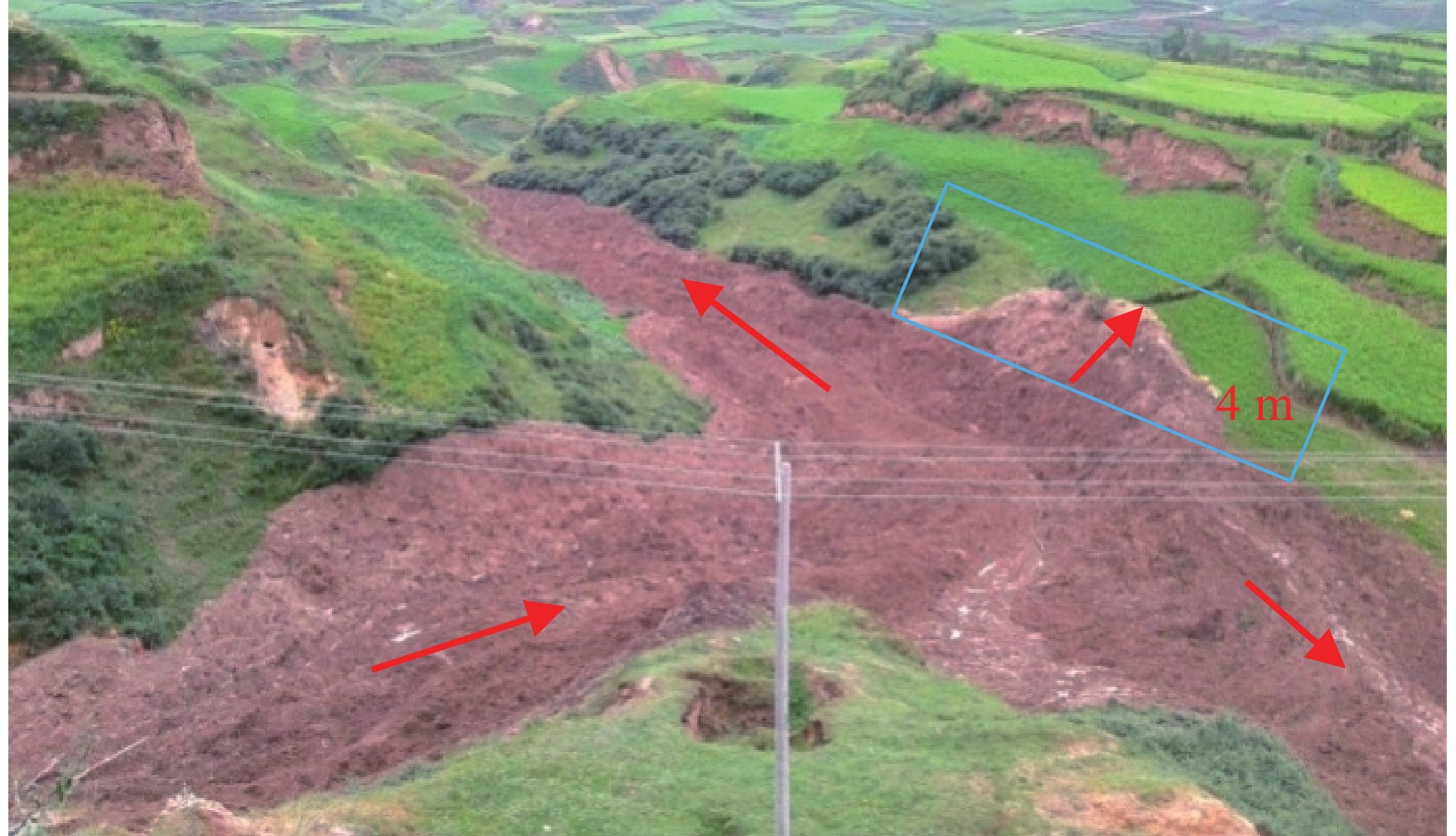






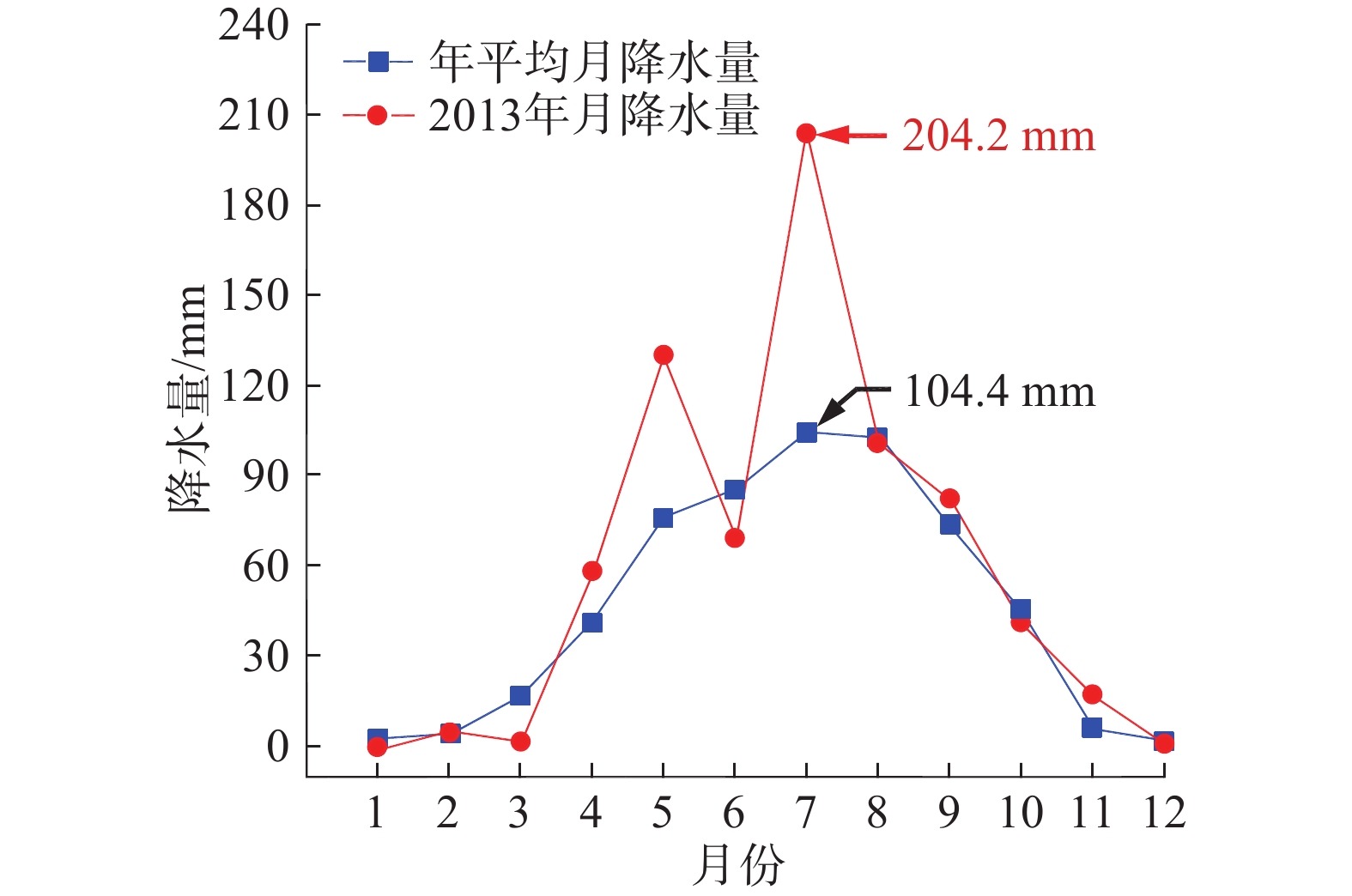
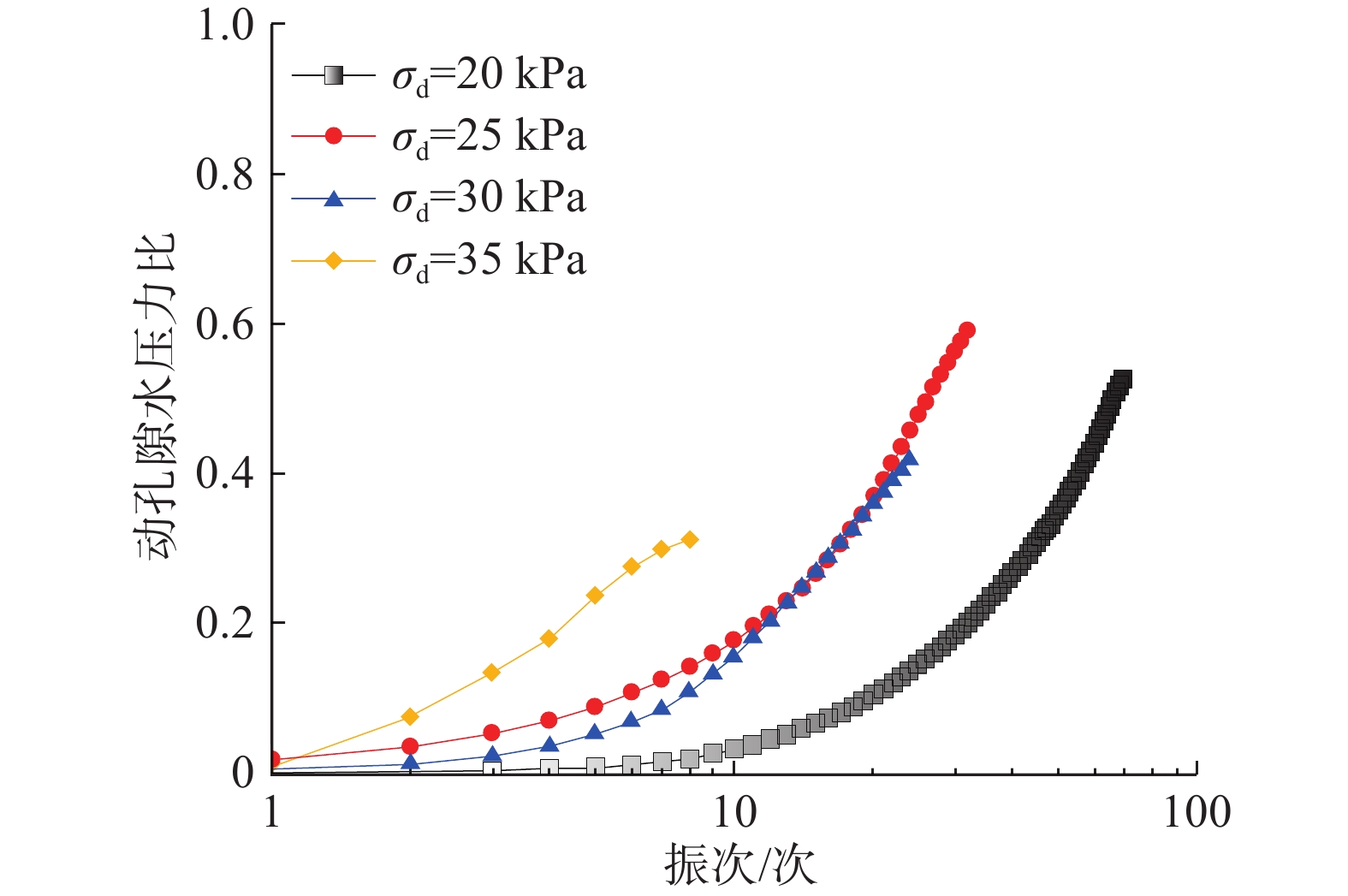
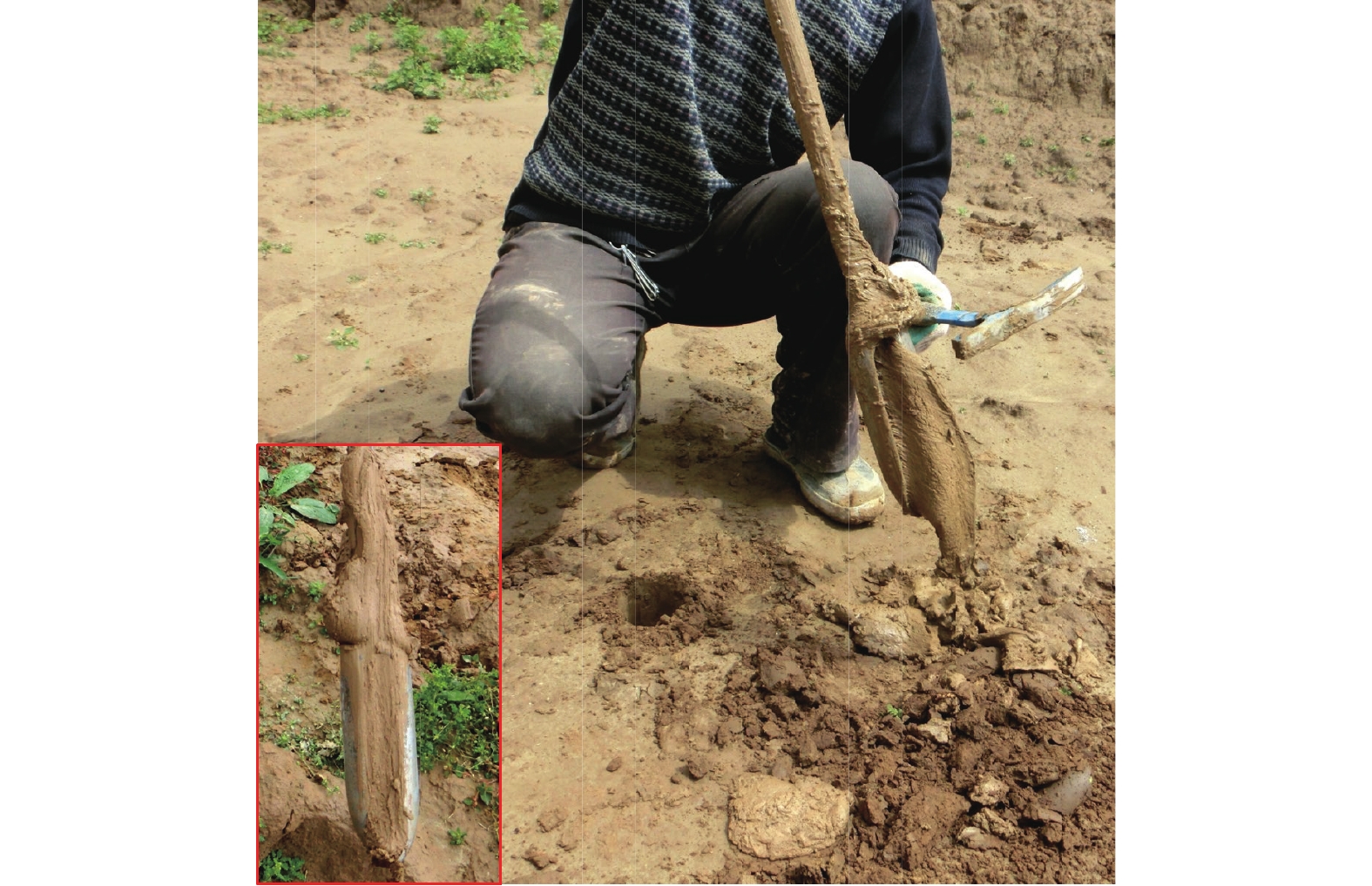
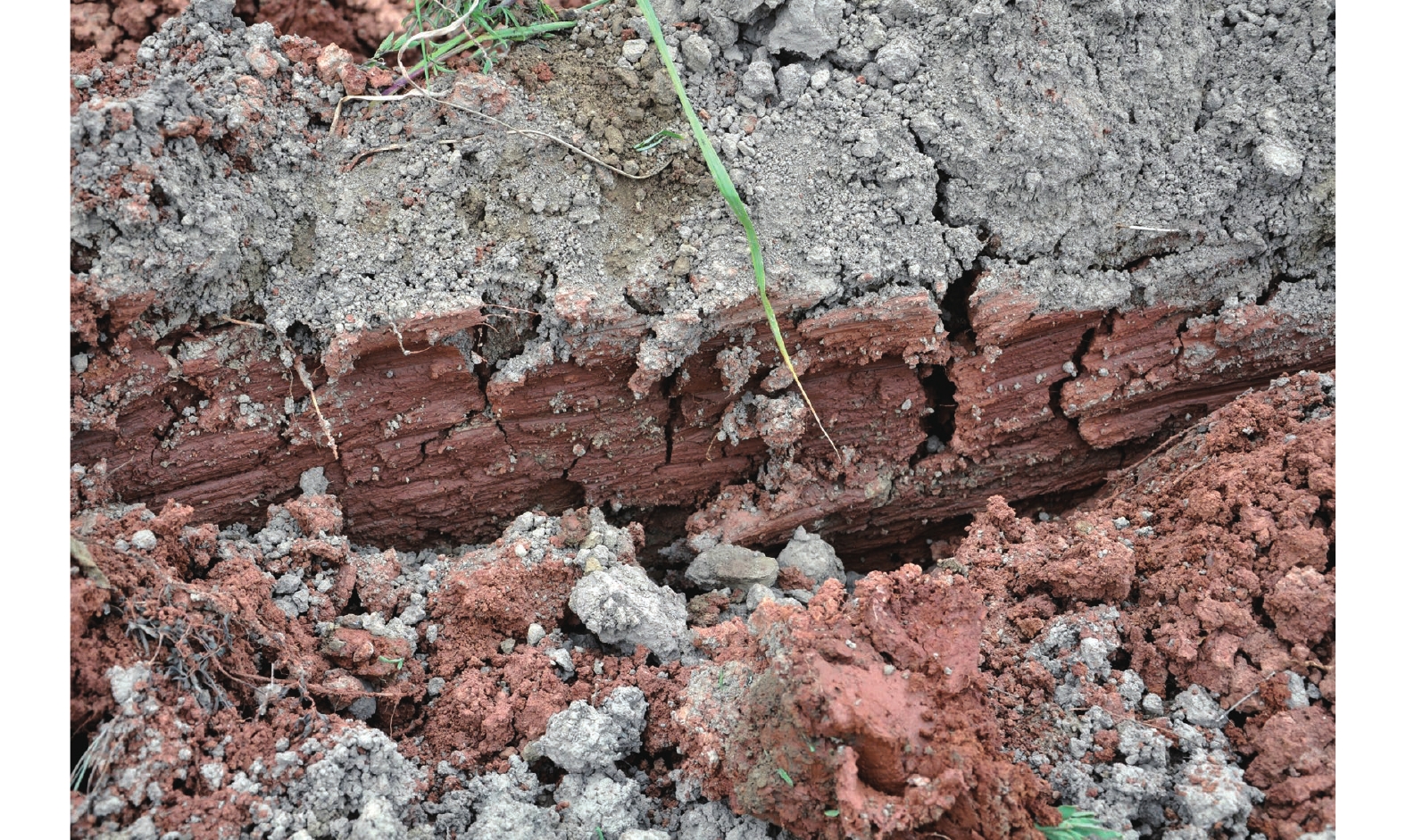
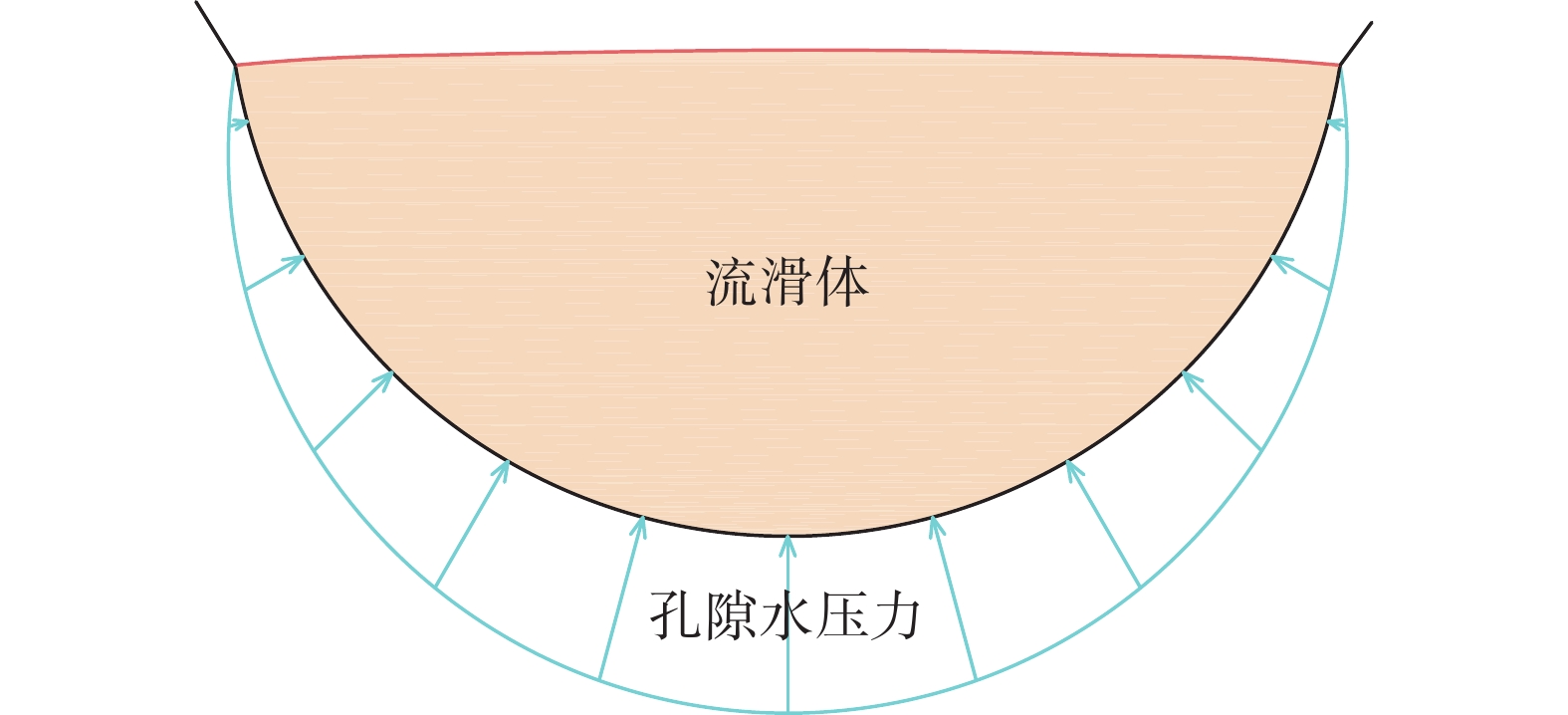




 邮件订阅
邮件订阅 RSS
RSS